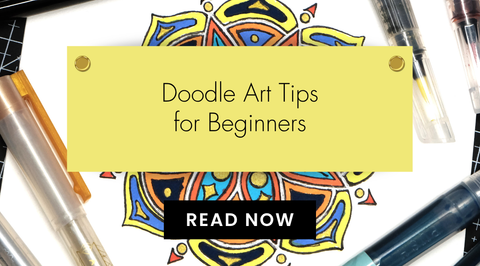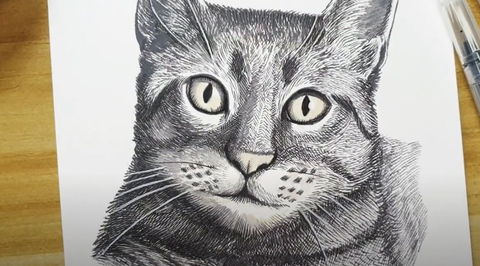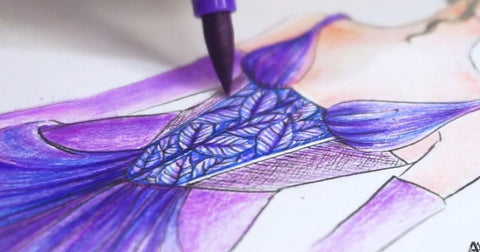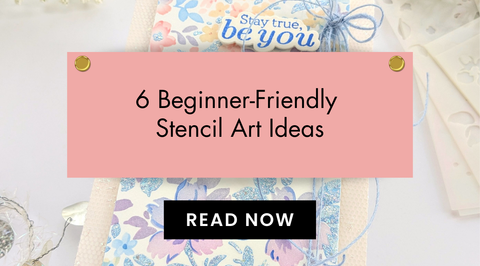The Power of Pastels: Exploring Soft and Subtle Colors in Your Artwork
Last Updated: August 11, 2025

In the vast spectrum of artistic expression, color plays a pivotal role in conveying emotions, setting moods, and bringing a piece to life. While bold and vibrant colors often steal the spotlight, there's a delicate charm to be found in the subtle and soothing world of pastels.
Join us as we dive into the power of pastels and explore how these soft hues can elevate your artwork to new heights.
Pastel Colors 101
Pastel colors refer to a range of soft, muted hues that are pale and less saturated than their more vibrant counterparts.
These colors are often described as light, delicate, and soothing. Pastel colors are created by adding varying amounts of white to traditional, more saturated colors, resulting in a lighter and less intense shade.

Common pastel colors include the following:
- Pastel Pink: A soft, gentle shade of pink that exudes a sense of sweetness and femininity.
- Pastel Blue: A light and calming blue that invokes a sense of tranquility and serenity.
- Pastel Yellow: A subdued yellow that brings a touch of warmth without the intensity of a brighter yellow.
- Pastel Green: A muted green that often evokes feelings of nature, growth, and freshness.
- Lavender: A pale purple with a hint of gray, creating a soft and elegant appearance.
- Peach: A warm and gentle color with a blend of pink and orange tones, reminiscent of the fruit it's named after.
- Mint Green: A soft and cool green with a touch of blue, reminiscent of the refreshing herb.
- Baby Blue: A very light and delicate shade of blue often associated with the color of the sky on a clear day.
- Lilac: A pale purple with more blue tones, creating a soft and romantic effect.
- Coral: A warm, pinkish-orange color that is softer than a true orange or red.
These pastel colors are widely used in various artistic endeavors, from painting and drawing to fashion and design, to create a subtle and pleasing aesthetic.
The Allure of Pastels

Pastels, characterized by their light and muted tones, are a versatile range of colors that evoke a sense of tranquility, elegance, and sophistication.
Pastels comprise gentle tints and shades, which create calming and aesthetically pleasing visual experiences. Artists use them individually or blended together – in any case, they have the power to transform a canvas into a serene masterpiece.
Capturing Emotion
One of the most compelling aspects of pastels is their ability to capture emotion with subtlety. Soft pinks and blues can convey a sense of tranquility and peace, while muted greens and yellows evoke feelings of nature and warmth.

Artists can use pastels to infuse their work with a wide range of emotions, creating a connection between the piece and the observer. A great example is how 24-year-old artist Aleksandra Pender captures emotion and beauty in her perfect portraits.
Enhancing Light and Shadow
Pastels excel at portraying the interplay of light and shadow.
Their gentle nature allows artists to create nuanced gradients, seamlessly transitioning from one shade to another. This makes pastels an ideal choice for rendering soft lighting conditions, such as dawn or dusk, where the subtlety of color is crucial in capturing the atmosphere.
Creating Harmony in Composition

Pastels are masters of harmony. Their soft and subtle nature allows for a seamless blending of colors, creating a harmonious composition that is visually appealing. Pastel palettes can bring balance to complex artworks, ensuring that each element works together in perfect unity.
Experimenting with Techniques
Artists can experiment with various techniques when working with pastels. The versatility of pastels – from layering and blending to creating textured effects – opens up a world of possibilities.
Pastels, as art mediums, also encourage artists to explore and be creative with various art forms like traditional painting, drawing, or even mixed media.
Tips for Working with Pastels
1. Layering for Depth
Build depth in your artwork by layering pastels, starting with lighter tones and gradually incorporating darker shades. Some of these techniques include:
- Blending - the most common technique for pastels. This involves applying layers of pastels on a surface and then smearing or rubbing them to create smooth transitions between colors and values. This results in smooth gradations of color and value on objects.
- Scrumbling - a technique where light and opaque layers of pastel are applied over areas on the picture plane, whether they have already been worked on or not. The result is optical color mixing, where adjacent colors visually blend to create a new color perception.
- Feathering - a technique for applying pastels linearly. Feathered lines may or may not follow the contours of the subject. They can also overlap, cross over each other, or be wide. The lines are usually short, but this is not a strict rule.
2. Blending Techniques
Explore different blending techniques to achieve smooth transitions between colors, creating a seamless and polished look.
You can use pastel brushes or shapers to mix colors together. Pastel shapers are available in different sizes and styles and have a rubber end that is either flat or tapered. Flat pastel shapers are great for blending large sections of colors, while tapered pastel shapers are perfect for blending small areas.
3. Contrast for Impact
Introduce subtle contrasts to highlight focal points in your artwork, drawing the viewer's eye to specific elements. Check out this blog post to discover how contrast can help you create striking and impactful artwork.
4. Play with Texture

Use pastels to experiment with texture, adding dimension and interest to your creations. As an example, check out these glorious gouache masterpieces created by artist Lê Bảo Châu.
5. Combine with Other Mediums
Lastly, don't be afraid to combine pastels with other art mediums to create unique effects and textures.
Pour Creativity Into Your Artwork with Pastel Colors
Pastels, with the right amount of creativity, can convey emotion, capture light and shadow, and create harmonious compositions. As artists, embracing the subtlety of pastels opens up a world of possibilities for expression and experimentation.
So, the next time you pick up your brushes or pencils, consider the soft allure of pastels and let them breathe life into your artwork.
Looking for more inspiration for your next artwork? Feel free to drop by The Creative Corner and pick our ideas for your next drawing or painting sesh. Creativity awaits!






